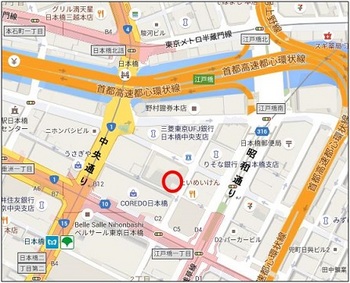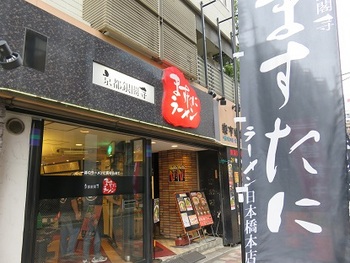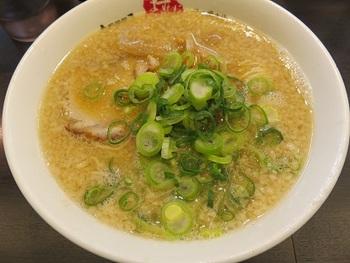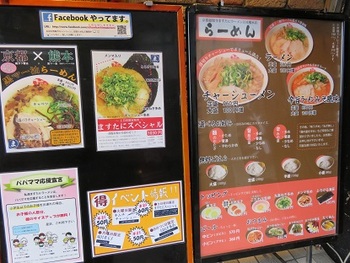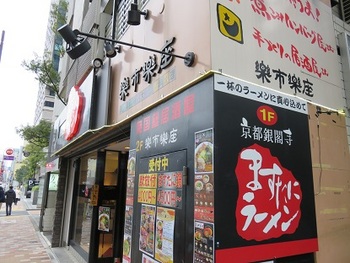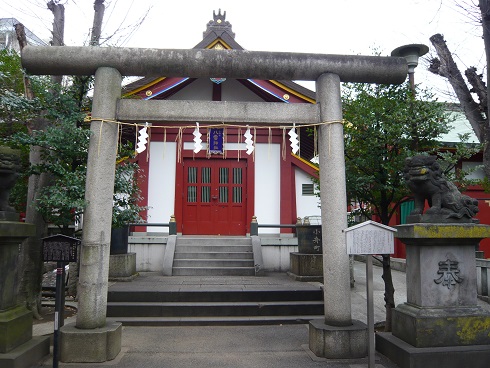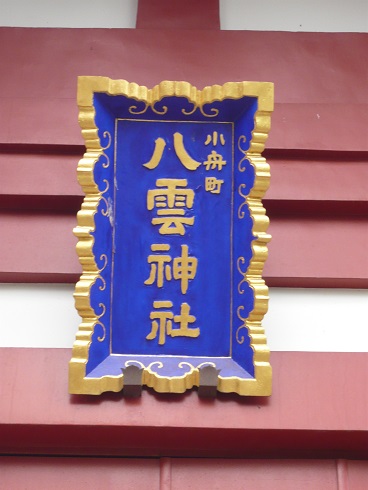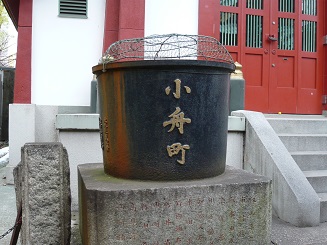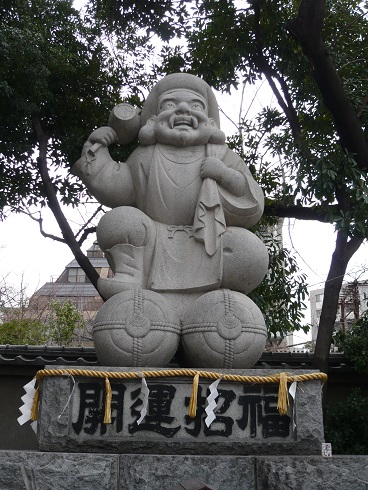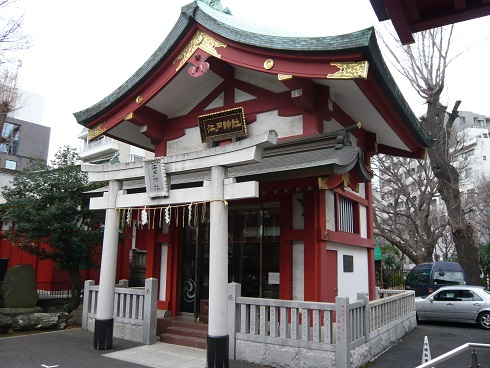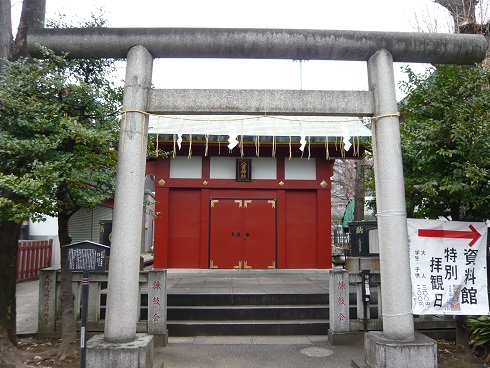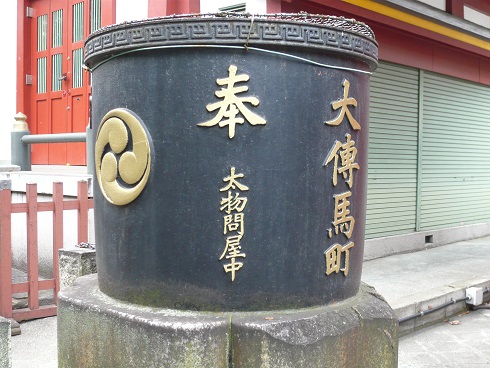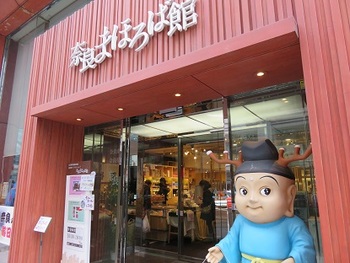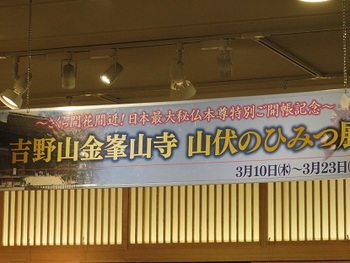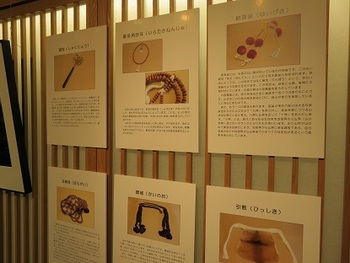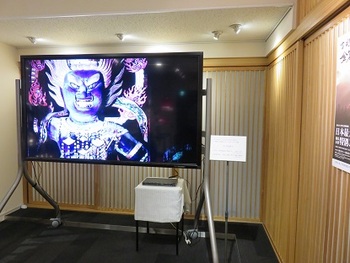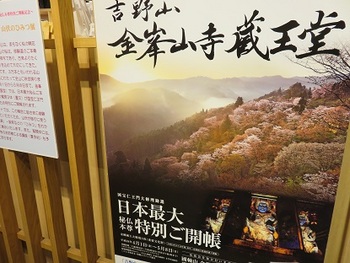Near Fukutoku Shrine in Nihonbashi Muromachi, a mystery that disappeared in the early Meiji era, even though it was said to be one of the best in Edo.
There was a restaurant "Momokawa".
The luxury restaurant is a restaurant style that emerged as the Edo culture matured, with elaborate dishes and servings.
It seems that the restaurant has evolved into a stylish Edo cuisine with the addition of playfulness as restaurants compete for dishes and dishes.
That's right. The luxury restaurant has formed a circle of many cultural people and contributed greatly to the development of Edo culture.
It can be said.
In the Edo period, many things like the "Gourmet Guide" were published today, and the "Kyoka Kaiseki Fee" was also published.
In Risoroku (Kyokaiseki Ryori Sugoroku) (an introduction of famous stores in the form of Soroku)
It is the name of Momokawa, along with famous luxury restaurants such as Yaozen in Yamaya and Hirasei in Fukagawa.
You can also see it.
Momokawa was founded in the 1760s and 1770s (around Meiwa and Yasunaga), and its peak was around Bunka Bunsei (1804-30).
He seemed to be proud of it, but suddenly disappeared at the beginning of the Meiji era. There are few materials, and what happened
It is mysterious that it is difficult to understand whether the store was closed at latitude, and it is interesting.
It is depicted in the Ukiyo-e "Picture of Hyakkawa Prosperity", and in Kyozan Santo's essay "Spider's Silk Volume", a passerby.
It is also listed as one of the four major culinary teahouses to play, and in the sense of a meeting of cultural people, Sadanobu Matsudaira
It seems that such a face gathered, and a cultural circle was formed.
Also, when Perry arrived on a black ship at the end of the Tokugawa period (when the second visit in 1854), he had a party in Yokohama.
It is also famous for having it. The dish at this time was the finest kaiseki cuisine, with 300+200 servings.
It seems that a copy was prepared, and the price is said to be 1,000 or 2,000.
Speaking of another "Hyakukawa", I think that the classical rakugo "Hyakukawa" cannot be removed.
In writing this blog, I heard the rakugo story of Sanyutei Ensei. He will serve in Hyakukawa
Hyakubei and customers (young people on the fish shore) performed "misunderstand" on the stage of Hyakukawa.
It's a fun story that makes me laugh unintentionally.
This time, we strolled around Nihonbashi, Ningyocho and Horidomecho with the keyword Hyakukawa.
First of all, when the Hyakukawa was located, the road between Nihonbashi COREDO Muromachi 1 and YUITO Building is Ukiyokoji.
There is Fukutoku Shrine ahead, but it seems to have been in this neighborhood.
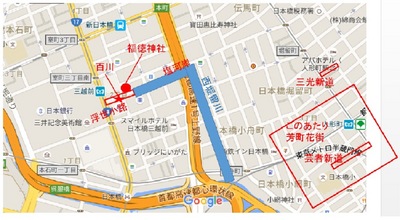
(↑ Click to see a large display.)
It is "Ukiyokoji", but there is a residence of the Kitamura family from Kaga who is a town old town, and Kaga.
Then, because "Koji" is read as "Shoji", it is called "Ukiyo Shoji". Also,
The origin of the name is that there is a ukiyo bath here, where the service of the yuto was good, or a store that sells ukiyo goza.
It seems that he was called like this.
Fukutoku Shrine is a very old shrine that has been around since the 9th century, and is the religion of warlords such as Yoshiie Minamotono and Michio Ota Atsushi?
It's said that it was. Ieyasu Tokugawa has also visited the temple several times. When Hidetada Nidai visited the torii gate, sprouts were found in the torii gate.
I found it out and named it "Mebuki Shrine", which is also known as "Mebuki Jinja".
Yes. On the north side of Ukiyo Koji, there is the approach to Fukutoku Shrine, and it is now named "Shin Ukiyo Koji".
Sir.
The nail-shaped Nishiborirugawa came right next to Fukutoku Shrine, and there was Shuuga shore nearby.
The river was reclaimed with nails in the middle of the Meiji era, and the rest was reclaimed in the early Showa era.
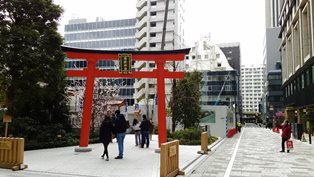
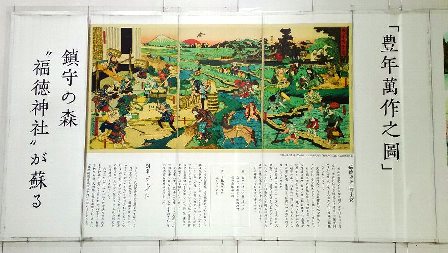
In addition to Ukiyokoji, the rakugo "Hyakukawa" includes Yoshicho and Sanko Shindo in addition to Ukiyokoji.
The place name of Michi) also comes out, so I took a walk about them.
Yoshicho used to call a part of today's Ningyocho Yoshicho in the past, and the neighborhood is flowers like "Yoshicho Hanamachi".
It is also famous as a city. In rakugo, Hyakubei is called Chizukaya in Yoshicho.
This is a setting that introduced Hyakukawa from the employment agency.
Yoshicho Hanagai is still continuing as the six flower districts in Tokyo, and a restaurant called Hamadaya preserves its tradition.
In addition, I think that "Geisha Shindo" next to Daikanonji retains the atmosphere of the flower district most.
※There are restaurants represented by Yoshiume, giving a good atmosphere.
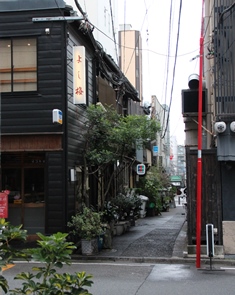
Sanko Shindo is a 30-meter path located at Horidomecho 2-chome, and Sanko Inari is a 30-meter path.
It's also the approach to the shrine. There is a long-established store called Todaya Shoten, famous for its pear garden dyeing nearby.
Sir. You can see a sample of pear garden dyeing on the wall on the side of the store.
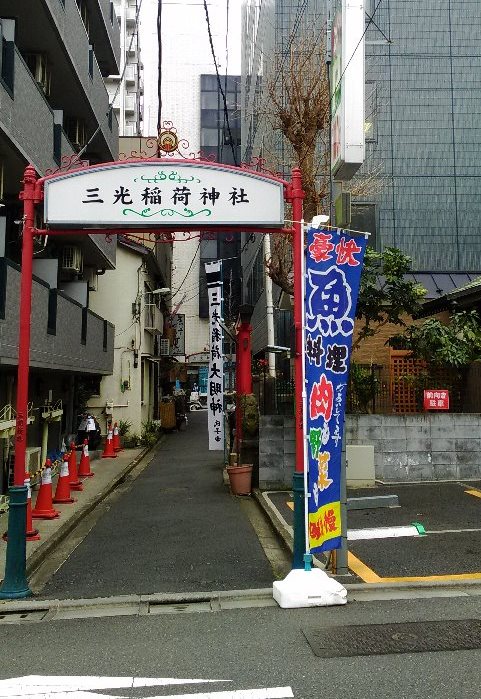
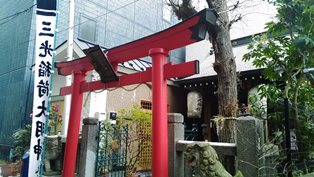
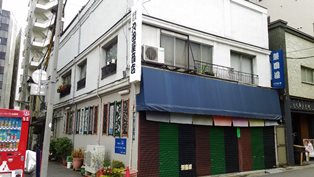
In rakugo, I hope that Hyakubei will call a person named Kamemoji in Jobanzu who lives here.
I'd like to be asked by a guest from Hyakukawa. 。 。 。 It will come out with the content.
Above
[References, etc.]
・"Edo Walk / Tokyo Walk" (Narumi-do Publishing)
・Nihon Keizai Shimbun, July 3, 2014, Japan
・“Walking the Stage of Rakugo“ Hyakukawa ”” (http://ginjo.fc2web.com/001momokawa/momokawa.htm) (in Japanese).
![]()
![]()
![]()
![]()
![]()
![]()
![]()
![]()
![]()
![]()
![]()
![]()
![]()
![]()
